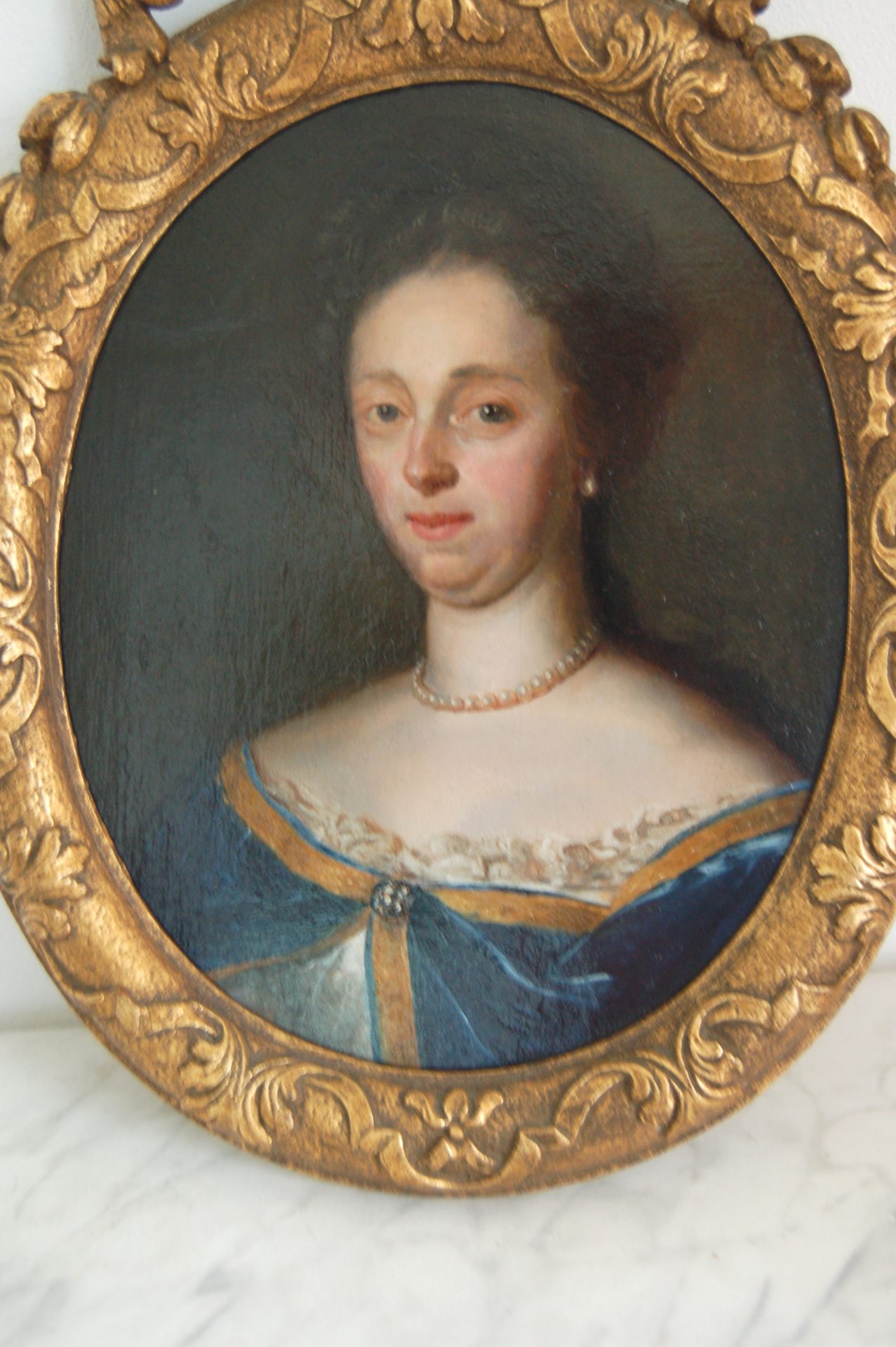KAREL DE MOOR
Leiden 1655 – 1738 Leiden or Warmond
Portrait of a Young woman
Oil on panel 18.5 x 15 cm
Datable c. 1690.
Provenance:
Private collection, Netherlands
Karel de Moor painted portraits throughout his career. He even accepted commissions in old age when his fortune had relieved him from the necessity to work. Although the art theorists of the period did not hold portrait as a genre in high esteem, De Moor enjoyed painting portraits. In fact, he owed his fame and acclaim to portraits, the commissions of Tsar Peter the Great and his second wife Catherine I marking the apogee of his career as a specialist in this field.[i] De Moor was the society portraitist of his age and many grand princes and other distinguished people sat for him, to name a few more; John Churchill, Duke of Marlborough and Prince Eugene of Savoy. Cosimo III de’Medici commissioned De Moor’s self-portrait, to be added to the famous collection of painted self-portraits of artists in Florence, and when this arrived the Grand Duke was so pleased with the painting that he awarded the artist a gold medal.[ii]
As a portraitist De Moor was both skilled and original. None of his preserved portraits are run of the mill and on each and every portrait he lavished the same astonishing care. He explored all kinds of portrait types. Some of his portraits are gem-like miniatures, measuring sometimes no more than c. 10 x 8 cm, while, for instance, his group portrait of the City Council of The Hague spans almost four meters.[iii] Most of his portraits, though, are small-scaled, knee-length and show a single person. A specific category consists of bust pieces on a very small scale, such as the present. Most of these are oval and the present work is a splendid example.
This small panel, depicting an unknown, young lady, demonstrates Karel de Moor’s qualities as a painter of portraits beautifully. Executed on an intimate scale, the portrait stands out for its simplicity and spontaneity. De Moor immortalized the young woman’s likeness to her best advantage, imbuing her appearance with grace and elegance, but without giving in to excessive flattery. De Moor painted his pretty patron with a smooth and spirited brush. The artist clearly delighted in painting the lace trimming of the woman’s chemise and indeed did a wonderful job in portraying the elaborate and ornate pattern as well as the feel of the textile. The sitter’s fashionable fontange hairstyle places this painting at the beginning the 1690s.
Karel de Moor was the son of his namesake Karel de Moor the Elder (1627 – 1689), who was an artist himself and an art dealer. De Moor junior probably received his first lessons from his father. He was apprenticed to Gerard Dou (1613 – 1675) and then trained in Amsterdam with the portrait painter Abraham van den Tempel (1622/1623 – 1672). When Van den Tempel died, De Moor travelled back to Leiden and here continued his education with Frans van Mieris (1635 – 1681). He completed his training in Dordrecht with Godefridus Schalcken (1643 – 1706). In 1683 De Moor registered with the Guild of Saint Luke in his native Leiden. He would on many occasions serve as “hoofdman” and as dean in the guild. In 1688 he married Hillegonda de Wael, who bore him six children, among which a son named Carel Isaac, who would also become an artist. In 1694 De Moor founded together with Jacob Toorenvliet (1640 – 1719) and Willem van Mieris (1662 – 1747) the “Leidse Tekenakademie”, of which institution he would serve as director jointly with Van Mieris until 1736. After his first wife had died in 1716, De Moor married the following year Johanna Louisa van Molenschot. Sadly, she died after only three years. De Moor was a highly talented and versatile artist. In addition to being a painter he was a skilled draughtsman and etcher. He painted Biblical and mythological subjects, his Pyramus and Thisbe, presently in the Turin Galleria Sabauda, being his most accomplished achievement in this field. In addition, he painted scenes of everyday life in which he fused the typically Dutch realism with a pastoral and Italianate flavour. During his lifetime, De Moor appears to have been primarily famed as a painter of portraits; his reputation even stretched across the borders of the country. In 1714, De Moor was knighted by Emperor Charles VI of Habsburg.
I. Both Portraits have been preserved (St. Petersburg, Hermitage). The artist had told his biographer Jacob Campo Weyerman about the conversation he had with his princely client during the posing session. See: De levens-beschryvingen der Nederlandsche konst-schilders en konst-schilderessen, 4 vols., The Hague and Dordrecht 1729-1769, vol. 4, pp. 9-13. Compare also Johan van Gool’s account: pp. 429-30.
II. Canvas (oval) 78 x 64 cm. Signed and dated 1691. See: K. Langedijk, Die Selbstbildnisse der holländischen und flämischen Künstler in der Galleria degli autoritratti der Uffizien in Florenz, Florence 1992, nr. 19, pp. 100-3, ill.
III. See for the group portrait: Ach lieve tijd, 750 jaar Den Haag, exh. cat. (Haags Gemeentemuseum) 1935, p. 181.
